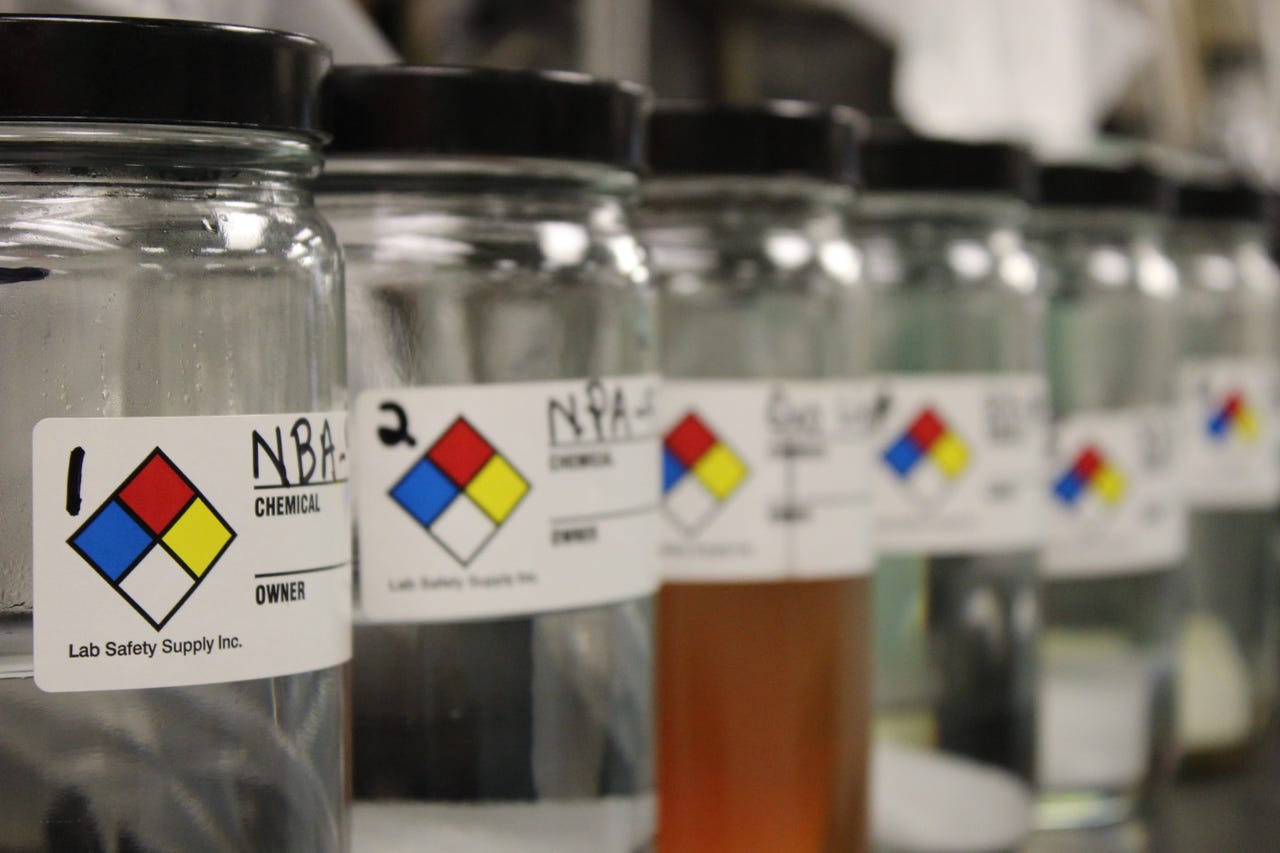Texmark Chemicals deploys industrial IoT to create the refinery of the future


Texmark Chemicals is a boutique chemical processing facility that manufactures hazardous materials in the petroleum product supply chain. The company teamed with Hewlett Packard Enterprise (HPE) to deploy industrial IoT (IIoT) to create a safer environment for employees while saving money via uninterrupted productivity, increased up-time and better process analytics.
Texmark is in the third phase of a three-part IIoT project to combine HPE and Aruba solutions from HPE Pointnext to create the "refinery of the future." Phases one and two established the digital foundation by enabling edge-to-core connectivity. Aruba deployed a secure wireless mesh network with access points and ClearPass for secure network access control. Aruba beacons provide location-based services for plant safety and security purposes. The cost of the wireless solution was about half that of a hardwired network.
For its edge analytics, Texmark is using the HPE Edgeline Converged IoT platform, an industrialized solution that supports robust compute capabilities. HPE Pointnext implemented the system as an HPE Micro Datacenter. HPE also upgraded Texmark's plant control room to enable edge-to-core connectivity and high-speed data capture and analytics, and to meet Texmark's safety and security standards. The Edgeline system runs Texmark's Distributed Control System software, which integrates operations technology and IT into a single system.
The third phase is adding predictive analytics, advanced video analytics, safety and security, connected worker, and full lifecycle asset management.
A growing market for DCPD
Texmark is headquartered in Galena Park, a small town on the Houston Ship Channel. It produces dicyclopentadiene (DCPD), which is a polymer used in printer ink, boat hulls, insecticides, paint, varnishes, fragrances and rubber goods.
Worldwide demand for DCPD is growing at approximately 4 percent compound annual growth rate (CAGR) between 2017-2024 and the global market is anticipated to reach about $800 million by 2024, according to a research report by Global Market Insights, Inc.
The increased demand is one of the reasons the company was in a position to improve its operations.
SEE: The rise of industrial IoT (ZDNet special report) | Download the report as a PDF (TechRepublic)
Updating a family-run company
Texmark was founded in 1962 by the father of current CEO Douglas Smith.
Smith said, "Over the last 15 years we've made significant capital investment within the process facility to help us make DCPD and other chemicals better and more efficiently. But we did an analysis about three years ago and determined that there were some areas -- one that we determined on our own and the other that was determined for us -- in which we needed to make some changes. And one of these was what's called mechanical integrity, which is looking at the condition of the different pieces of equipment in your facility. We had been doing mechanical integrity, but we had been doing it in a non-linear way."
The company was spurred into action when insurance deductibles doubled due to the need for the implementation of an updated inspection plan. Smith, working with Linda Salinas, the company's vice president of operations, realized they also needed to improve the company's technology base -- "what we call our DTS, our control system. We knew that we needed to update it and we had built it also in bits and pieces over time and it was essential that we got moving on that."
Party bus to HPE's IoT innovation lab
After talking to HPE about innovation, they decided to visit the company's IoT lab, even though IoT was a new concept for many employees.
Salina recalled, "We rented a party bus and put thirteen Texmark employees in it. We all got matching Texmark shirts and we were going on a field trip. And it was exciting for these employees because they weren't part of the meeting. They didn't know what IoT was. They just knew that we were leaving the plant and we got to do this on company time. And it was a cross-section of people from the lab, engineering, operations, maintenance, admin folks. It was a good representation of the people that run the business for us."
"We got there and one of the representatives from HPE gave us mini-lecture and defined for us what IoT was. And even after that lecture it really just didn't ring clear for us what IoT meant," she said. "So then, we actually toured the lab. It's like an interactive science museum."
There was a centered pump on display in the lab that drew everyone's attention.
Values in the processing unit at Texmark.
"The pump represents one of the cores of our business and it was familiar to everyone. We all gravitated towards that and it was a flowserve pump and it was just blowing green water in the pump and out of the pump," Salinas said. "We have pumps at the plant that move the product from the storage tank through the process, out of the process, into the storage tank, in a truck, the rail cars and so forth. So this was very familiar. So we go over and look at this demonstration and they have it set up so that you can make the pump be misaligned. You can make the pump operate in a way that is not optimal. And then on the handheld device, like an iPad, it would show on the screen that before, when it was running normally, the predicted life was maybe 600 hours. But then when you took the pump out of alignment and it started acting erratically, instead of running for the next 600 hours, it reduced the expected life to like 60 hours. And if you really mess with the alignment, something really radical, it might last only six hours."
Seeing the way that IoT sensors could help with maintenance and detect when something was off before employees could even see it really hit home with the Texmark employees.
Saving money through increased efficiency
"The pumps are the perfect example of saving money. And the reason why is for any piece of equipment, let's say any pump in the plant, if we are to connect it with wire, if we have to hardwire that pump and run it from the control center to the pump, it can cost anywhere from $2,000 to $7,000 to hardwire that pump. By placing $300 worth of [wireless] sensors on the pump and piping that information into those with widgets and wi-fi, there's a considerable saving," Smith said.
Texmark currently has wireless sensors on two pumps and will eventually put them on all of the pumps involved in production.
Currently, employees spend 35,000 hours each year monitoring the plant, which means more than $1 million in inspection program costs. Texmark is still determining how many hours are saved by reducing hands-on inspections, but it's expected to be considerable, Smith said.
As a boutique chemical plant, Texmark receives raw material from customers and processes it on its equipment to create an end product for them. Smith is currently talking to a potential customer who came to Texmark simply because they'd heard about the IoT sensors in the plant, and were interested in the benefits and cost savings.
The vast amount of data that Texmark receives from the IoT sensors also helps, because it allows for assessments throughout the production process. "Having every inch of data along the way and how it impacts the quality of the product that we're making for them; all of that data is valuable because then we can tweak how we ramp it up," Smith said.
The safety aspect is also important. Salinas added: "The safety aspect really gets me excited. If you look at each one of these use cases that we're looking at -- the sensor pumps, the video analytics, connected worker, and total asset management -- in one way or another they touch and impact safety and reduce risk. So when we talk about the sensored pump, if a pump fails, not only does it mechanically break, there's risk that it will leak hydrocarbons, which are flammable, which will then potentially catch fire, potentially injure someone."
"We talk about sensored pumps as something that's to protect the assets, but in the end it reduces risk and improves safety," Salinas said.